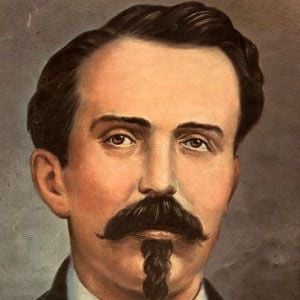About
Remembered as the catalyst for the Ten Years' War, this plantation owner declared Cuban independence in 1868 and liberated his slaves, encouraging them to join him in a rebellion against Cuba's Spanish-controlled government. He was killed by the Spanish in 1874, but his actions paved the way for the Cuban War of Independence of the late 1890s.
Before Fame
Before becoming a political revolutionary, he pursued a career as a musician, most notably co-writing the song "La Bayamesa."
Trivia
His visage has been featured on Cuba's ten and one hundred pesos bills.
Family Life
His marriage to Maria del Carmen de Cespedes y del Castilo resulted in a daughter named Maria and sons named Oscar and Carlos. With his second wife, Ana Maria de Quesada y Loinaz, he had three more children: Carlos, Oscar, and Gloria. Finally, through a later-life affair with Francisca Rodriguez, he fathered a son named Manuel.
Associated With
Nearly a century apart, Cespedes and Che Guevara both led revolutions in Cuba.












